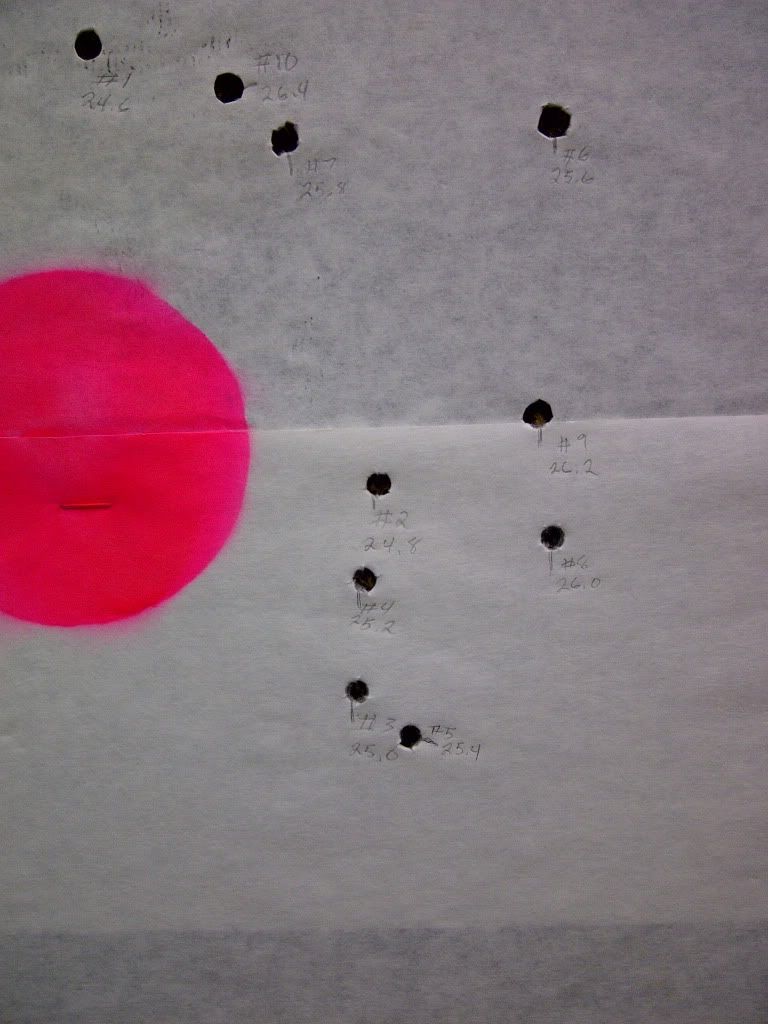This weekend I was able to shoot an initial ladder test at 300 yards. The aim point on target is a 3" circle for size reference.
Load Data:
5.56x45/.223 16" AR
Bullet: 65gr SGK
Powder: Varget
Primer: CCI.41
Brass: Lake City '11
1. 24.6 N/A Sight in on paper, adjuested -2MOA.
2. 24.8 2599
3. 25.0 2650
4. 25.2 2666
5. 25.4 2656
6. 25.6 2710
7. 25.8 2743
8. 26.0 2743
9. 26.2 2766
10. 26.4 2801 slightly flattened primer.

25.6 and 25.8 impacted at the same horizontal plane, but it is a small margin for error. Is this the node I should load within, or should I look around the cluster between 25.0-25.4 even though there is more vertical dispersion?
Your input and advice will be greatly appreciated.
Load Data:
5.56x45/.223 16" AR
Bullet: 65gr SGK
Powder: Varget
Primer: CCI.41
Brass: Lake City '11
1. 24.6 N/A Sight in on paper, adjuested -2MOA.
2. 24.8 2599
3. 25.0 2650
4. 25.2 2666
5. 25.4 2656
6. 25.6 2710
7. 25.8 2743
8. 26.0 2743
9. 26.2 2766
10. 26.4 2801 slightly flattened primer.

25.6 and 25.8 impacted at the same horizontal plane, but it is a small margin for error. Is this the node I should load within, or should I look around the cluster between 25.0-25.4 even though there is more vertical dispersion?
Your input and advice will be greatly appreciated.



